|
|
|
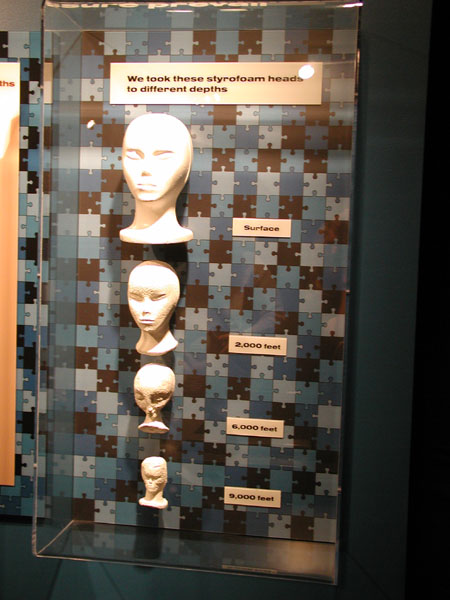
A graphic illustration of the effects of the increasing pressure as you go deeper into the ocean.
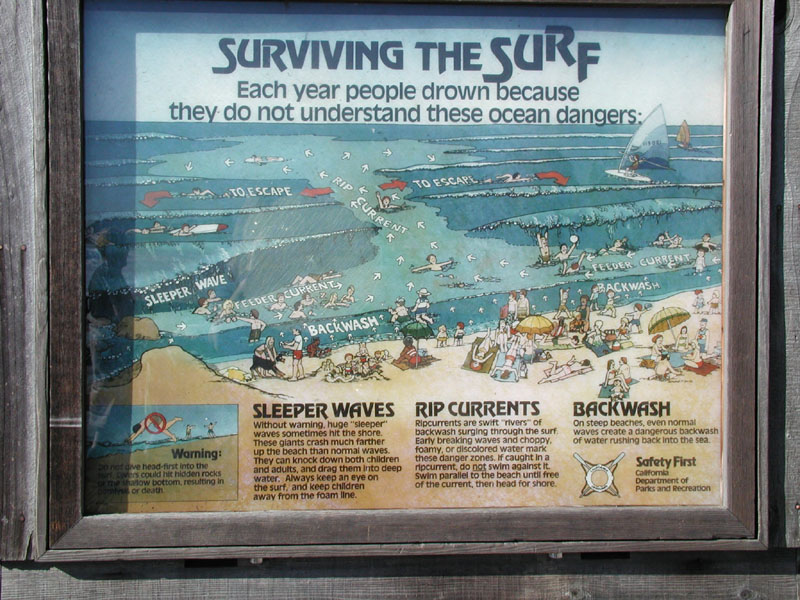
Rip Tides: The Bernoulli Effect- faster moving water has lower pressure; if you get caught in the rip tide, there is a force acting to keep you in the center of the stream. When you have been carried out far enough that the velocity is small, then you can escape by swimming *parallel* to the shore. Don't waste your energy fighting against the current!
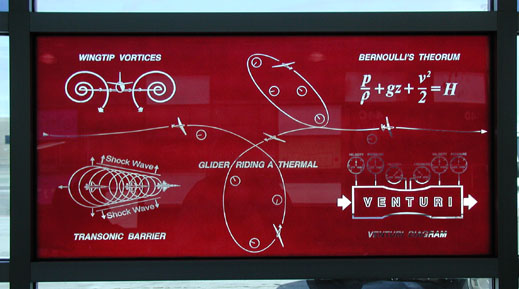
The Bernoulli effect: Flight
Notice the Venturi tube, which show that where the fluid travels faster (in the narrow part) the pressure is LOWER.
Notice also one form of Bernoulli's equation, and the illustrations of wingtip vorticies (responsible for drag as well as lift on the plane) and shock waves. This picture was taken at the American Eagle terminal at the Los Angeles airport.
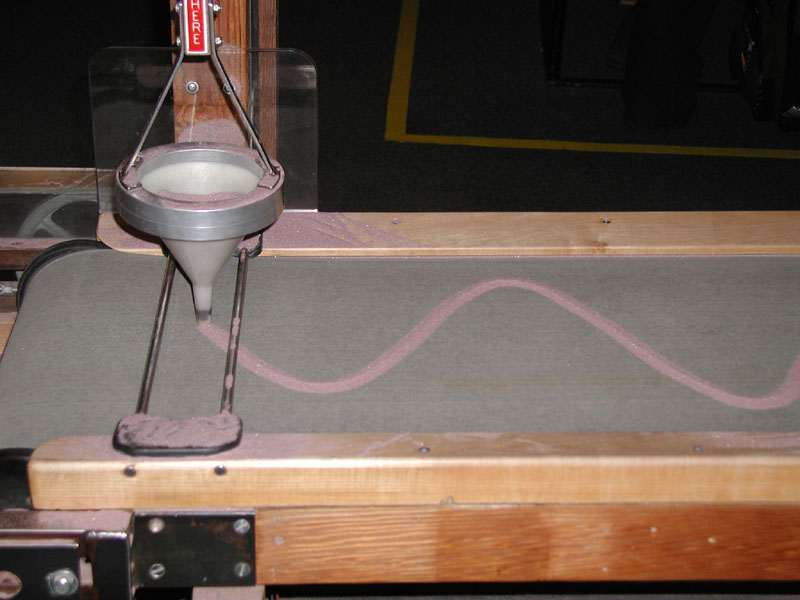
The connection between two types of simple harmonic motion: waves and the pendulum. Here, the pendulum is filled with sand. As it moves back and forth, it traces out a sine wave on the conveyor belt moving underneath it.
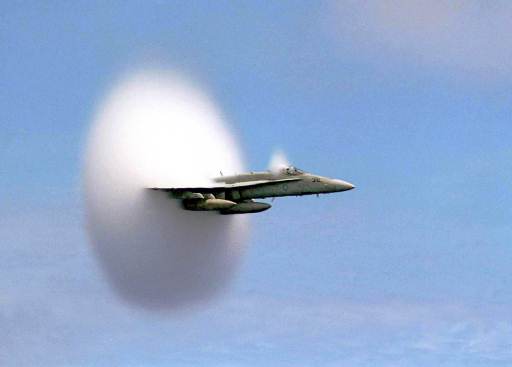
An amazing photo (whose I don't know, it came to me over email) of an F18 fighter just as it reaches the speed of sound. You can think of this photo as a sonic boom visualized by the condensation of water vapor resulting from the drastic change in pressure.
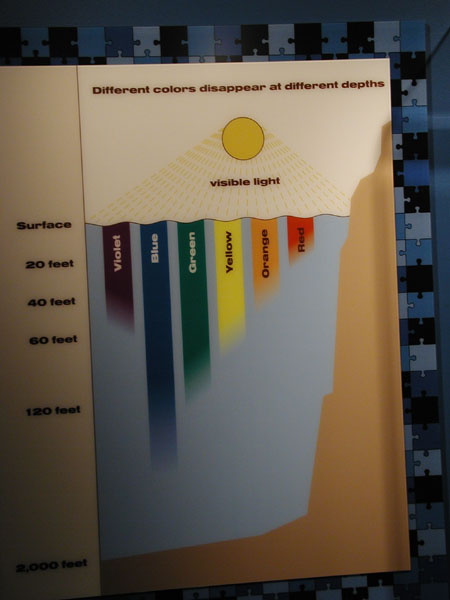
The absorption of different colors of light at different depths.
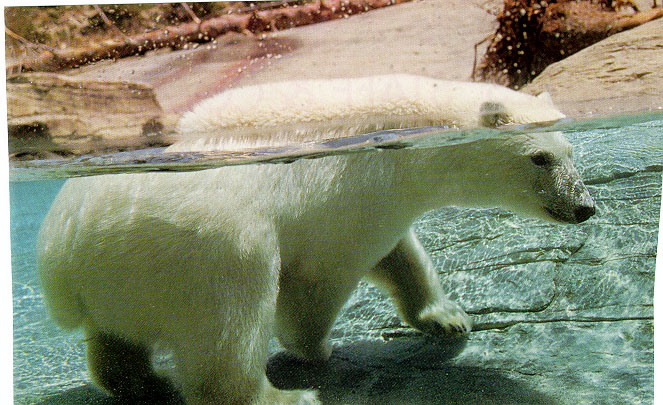
A graphic example of the refraction (bending) of light. I believe I scanned this in from a copy of "The Physics Teacher" magazine available from AAPT,
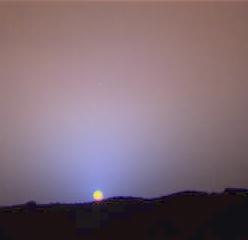
A NASA photo of a Martian sunset taken by the Pathfinder lander. On this day, there wasn't much dust in the atmosphere, so there isn't they typical reddish hue to the sky. On such a day, the sky is looking blue at sunset and the sun looks yellow, because only at that time is it passing through enough atmosphere to be scattering at all (whereas on earth, the sun would look reddish because all of the blue would have scattered away, but Mars has a much thinner atmosphere). It looks a lot like it does on Earth at noon.
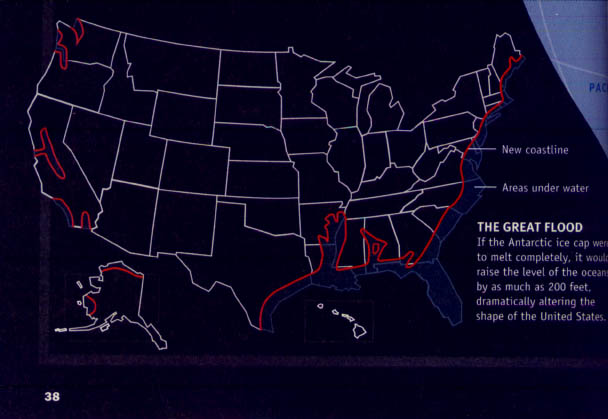
This is what the new coastline of the US would look like if all the ice on Antarctica were to melt (about a 200 foot increase in sea level)-- Global warming in the very unlikely extreme.
My apologies, I have no idea who created these animations, or I would be happy to credit the authors.
To return to the physics homepage, please click on the button below